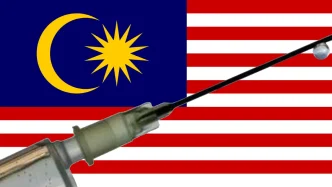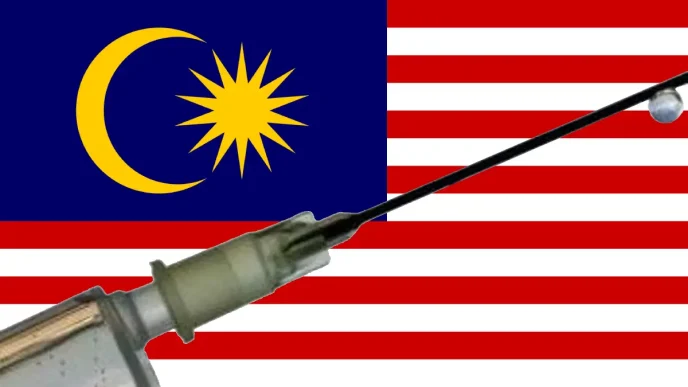Thailand’s durian industry, a cornerstone of the country’s agricultural exports, is under intense scrutiny as concerns mount over potential contamination with Basic Yellow 2 (BY2), a chemical classified as a Group 2B carcinogen by the World Health Organization. With China—a key market for Thai durians—enforcing strict testing protocols, the Thai Ministry of Agriculture and Cooperatives is racing to assure exporters and farmers that the situation is under control, amid fears of shipment rejections at Chinese checkpoints.
Official Response to Testing Laboratory Concerns
On April 8, 2025, Ekaphap Phonsue, spokesperson for the Ministry of Agriculture and Cooperatives, addressed circulating reports suggesting that all Thai testing laboratories for durian exports to China had been shuttered. He categorically denied these claims, confirming that four laboratories remain operational for testing BY2 and cadmium levels in durian shipments. Additionally, five more laboratories have applied for registration with the General Administration of Customs of China (GACC), while two others are seeking to resume testing operations. Ekaphap stressed the Ministry’s proactive stance, urging farmers and exporters to rely on official updates rather than unverified online sources that could sow confusion.
The Threat of Basic Yellow 2 Contamination
Basic Yellow 2, an organic compound often used as a dye in textiles, paper, leather, and house paints, has emerged as a significant concern for Thailand’s durian exports. Classified as a potential carcinogen, its presence in agricultural products is strictly regulated by importing countries like China. Under Chinese customs rules, durian shipments lacking a lab report confirming the absence of BY2 will be rejected at all checkpoints. This stringent policy poses a direct threat to Thai exporters, who rely heavily on the Chinese market, where durian—often dubbed the “king of fruits”—enjoys immense popularity. The economic stakes are high, as durian exports contribute millions annually to Thailand’s economy, with China accounting for a substantial share of demand.
Ministry Assurances Amid Export Volume Surge
Adding to the discourse, Minister of Agriculture and Cooperatives Narumon Pinyosinwat expressed concern over the potential impact on durian exports but reassured stakeholders that sufficient laboratory capacity exists to manage the anticipated surge in export volume expected in May. Narumon directed exporters to consult the Ministry’s official website for a list of authorized laboratories capable of conducting BY2 and cadmium tests. This transparency aims to streamline the certification process and mitigate delays that could jeopardize shipments during peak season. The Ministry’s efforts reflect a broader commitment to maintaining Thailand’s reputation as a reliable supplier of high-quality agricultural goods.
Economic Implications for Thai Farmers and Exporters
The durian trade is a lifeline for many farmers in Thailand’s eastern provinces, such as Chanthaburi, where sprawling orchards and wholesale markets like Noen Sung buzz with activity during harvest season. Workers stacking durians onto trucks for export, as witnessed on May 1, 2024, at the Paeng Jae Ting supplier in Chanthaburi, embody the labor-intensive nature of this industry. However, the specter of rejected shipments looms large. A single failed test could result in significant financial losses, with the cost of transporting and storing rejected goods adding to the burden. For small-scale farmers, who often operate on thin margins, such setbacks could be devastating.
Beyond immediate losses, the broader economic implications are troubling. Thailand exported durians worth billions of Thai Baht last year, with a significant portion—estimated at over 100 billion Thai Baht (US$2.8 billion)—destined for China. Any disruption in this trade could ripple through the agricultural sector, affecting not only farmers but also logistics providers, exporters, and rural communities dependent on durian revenue. The Thai government, aware of these stakes, is under pressure to ensure compliance with international standards while safeguarding its market share against competitors like Vietnam and the Philippines, which are also vying for a slice of China’s durian market.
Challenges in Testing and Compliance
Ensuring compliance with China’s stringent import regulations is no small feat. The testing process for BY2 and cadmium requires specialized equipment and expertise, and not all laboratories in Thailand are currently equipped or authorized to conduct these assessments. While the Ministry’s announcement of additional lab registrations is a step in the right direction, the timeline for approvals by the GACC remains unclear. Exporters face the added challenge of coordinating with authorized facilities during peak harvest periods, when demand for testing services spikes. Delays in obtaining test results could lead to bottlenecks, with perishable durian shipments at risk of spoilage if held up at customs or during transit.
Moreover, the origin of BY2 contamination in durians remains a subject of investigation. Some speculate that the chemical may enter the supply chain through contaminated water sources or packaging materials used during processing and transport. While no definitive evidence has confirmed these theories, the uncertainty underscores the need for comprehensive traceability systems and stricter quality controls across the durian production pipeline. The Ministry has yet to release detailed findings on contamination sources, but addressing this gap will be critical to preventing future issues.
Broader Context of Thailand-China Trade Relations
The durian testing issue unfolds against the backdrop of broader Thailand-China trade relations, which have deepened in recent years through initiatives like the Belt and Road Initiative and bilateral trade agreements. Agricultural exports, including durian, rice, and rubber, form a cornerstone of this partnership, with China serving as one of Thailand’s largest trading partners. However, trade disputes and regulatory hurdles occasionally strain this relationship. The BY2 testing requirements are a reminder of China’s increasing emphasis on food safety and quality assurance, a priority that Thai exporters must navigate to maintain access to this lucrative market.
At the same time, Thailand’s agricultural sector faces domestic challenges, including labor shortages, fluctuating commodity prices, and the impacts of climate change on crop yields. Durian farmers in particular grapple with erratic weather patterns that can affect fruit quality and harvest timing. These factors compound the pressure on exporters to meet international standards, as any lapse could jeopardize not only individual shipments but also Thailand’s reputation as a trusted supplier. The government’s role in facilitating compliance—through laboratory support, farmer education, and diplomatic engagement with China—will be pivotal in sustaining this vital industry.
Public and Industry Sentiment
Among farmers and exporters, anxiety is palpable. Social media platforms in Thailand have seen a flurry of posts expressing concern over the potential closure of testing facilities and the financial toll of rejected shipments. While the Ministry’s clarifications have provided some reassurance, skepticism persists about whether the available laboratories can handle the volume of tests required during peak export months. Industry associations have called for greater government support, including subsidies for testing costs and expedited registration processes for additional labs. Without swift action, some warn, smaller exporters may be squeezed out of the market, unable to absorb the costs of compliance.
Public sentiment, meanwhile, reflects a mix of pride in Thailand’s durian heritage and frustration over recurring export challenges. Consumers in urban centers like Bangkok, while largely removed from the intricacies of agricultural trade, recognize durian as a symbol of national identity. Any threat to its global standing is seen as a blow to Thailand’s economic prestige. As one exporter in Chanthaburi remarked, “We’ve worked hard to make Thai durian the best in the world. We can’t let a chemical issue undo all that.”
Looking Ahead: Solutions and Uncertainties
As Thailand braces for the peak durian export season in May, the Ministry of Agriculture and Cooperatives faces a critical test of its crisis management capabilities. Ensuring that testing laboratories are fully operational and accessible to exporters across the country will be paramount. Equally important is the need for clear communication with farmers, many of whom lack the resources to navigate complex regulatory updates on their own. Collaborative efforts between government agencies, industry stakeholders, and international partners could pave the way for long-term solutions, such as improved testing infrastructure and contamination prevention measures.
Yet questions linger about how quickly Thailand can adapt to China’s evolving import standards and whether smaller players in the durian trade will weather the storm. For now, the industry holds its breath, hoping that the “king of fruits” retains its crown in the global market. As one Ministry official put it, the path forward requires not just compliance, but a renewed commitment to quality that benefits both Thai farmers and the consumers who savor their produce halfway across the world.













